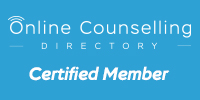Written by Brad Krause
Taking care of a family isn’t just about meeting day-to-day obligations. It’s about cultivating a rhythm that allows every member to feel nourished, grounded, and capable of showing up fully for one another. When families begin treating self-care as an investment rather than a luxury, the impact resonates across emotional, physical, and relational dimensions. From mindful communication to creating small personal moments of relief, here are tangible ways families can embed self-care into the fabric of everyday life.
Emotional and Mental Habits That Stick
The strongest families are often the ones that pause to look inward together. Starting with something as simple as weekly family wellness check‑ins gives everyone a predictable time to share feelings and small victories without interruption. These moments don’t have to be long; ten minutes around the dinner table or before bedtime can shift how supported each person feels. Children learn to recognize and name their emotions, and parents spot stress signals early. Over time, these regular check-ins transform family self-care from an abstract concept into a reliable habit that builds trust.
Professional Support for Family Well-Being
Sometimes, the deepest act of self-care is reaching out for guidance. When transitions, stressors, or patterns feel too heavy to handle alone, counseling can help families navigate life’s challenges. A trained professional provides neutral ground, new tools, and structured conversation that can change the household dynamic in lasting ways. Seeking this support doesn’t signal weakness—it models resilience and proactive care for the next generation.
Nutritional Boosts for Daily Vitality
Investing in self-care also means fueling the body with real nutritional support. Many families integrate best greens powders into smoothies or breakfast routines to fill dietary gaps and keep energy stable through busy days. It’s an easy, repeatable habit that reinforces physical wellness without adding prep stress to already full schedules. Pairing nutrition with family meals reinforces the message that care for the body is both practical and shared.
Physical Movement as Family Connection
Exercise doesn’t need to live in isolation or feel like a parental burden. Families who reimagine workouts as shared adventure—backyard mini‑games, spontaneous races to the mailbox, or living room yoga—develop a habit that feels like play. It helps to introduce variety, whether it’s a short bike ride or a new weekend hike, so the excitement remains fresh. By turning workouts into family fun time, parents can maintain their own health goals while showing children that movement is joyful, not punitive. The laughter, competition, and shared sweat subtly weave physical care into the family’s identity.
Practice Mindfulness Together
Mindfulness works best when it’s embedded into moments the whole family shares, not just tucked into an adult’s quiet morning. Activities like simple breathing games, sensory walks, or even shared gratitude circles can ease collective stress. Children often follow parents’ cues, which is why practicing simple mindfulness with your kids strengthens calm in both directions. Early on, some families find it easier to link mindfulness to predictable moments: the first sip of morning tea, a sunset view from the porch, or the quiet after a school pickup. Small rituals like these act as anchors, making calmness a skill the household can reach for without needing long, formal meditation sessions.
Nature and Outdoor Connection
There’s a restorative quality to nature that technology simply can’t replicate. Even brief outdoor experiences can dissolve irritability and restore perspective. Parents can plan tiny interventions like after-dinner garden walks or weekend trips to the nearest park to break routines that keep everyone indoors. Integrating the benefits of forest therapy walks into family life isn’t just about exercise; it’s about sensory reset. Kids explore textures, scents, and sounds that recalibrate focus, while parents enjoy stress relief that lingers long after the shoes are kicked off at home.
Family Communication and Resilience
Communication is the bridge that keeps individual self-care efforts from feeling disconnected. Families that prioritize candid dialogue develop the ability to handle small frictions before they escalate. Making space for sharing open conversations to strengthen trust allows children to model honesty and vulnerability without fear. Parents can use car rides, bedtime routines, or cooking sessions as informal forums for these discussions. Over time, this rhythm of dialogue builds resilience, so even unexpected challenges don’t shatter the sense of unity.
Quick Micro-Self-Care for Parents
Parents often shoulder the invisible labor of home life, leaving little room for extended personal care. But self-care doesn’t always require hours; fitting in momentary reset breaks can be as simple as stepping onto the porch for a stretch, closing your eyes for two deep breaths, or savoring a quiet minute after school drop-off. When parents normalize these tiny resets, they silently give permission for everyone in the family to notice their own energy dips and respond with small restorative acts. Consistency here adds up to a household that feels lighter and more sustainable.
Self-care for families isn’t an indulgence; it’s a long-term investment in emotional stability, physical energy, and relational harmony. By combining micro-habits like mindful pauses, shared movement, and nature breaks with supportive nutrition and professional guidance, families build a home environment that naturally restores itself. These choices may look small in the moment, but they accumulate into a rhythm that sustains everyone living under one roof
Discover a holistic approach to mental wellness with Resolute Counseling, where personalized therapy and medication management pave a positive path to growth and wellness. After spending most of his time in a corporate setting and neglecting his self-care for far too long, Brad embraced his calling and decided to become a full-time life coach. He now spends the rest of his life helping people get a better foothold on their wellness above all else through Self Caring.


